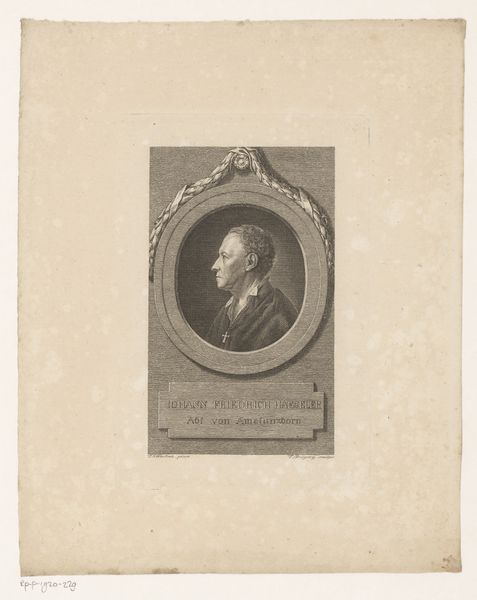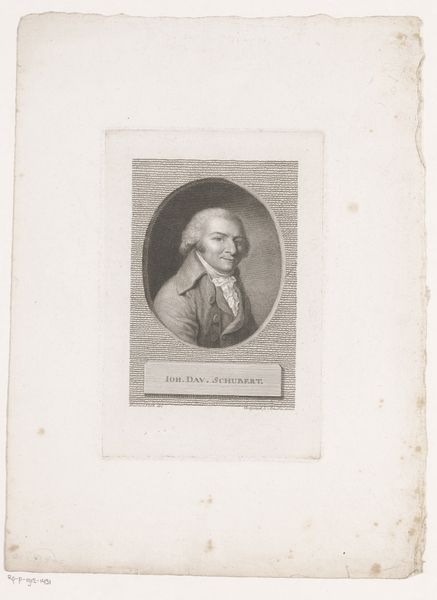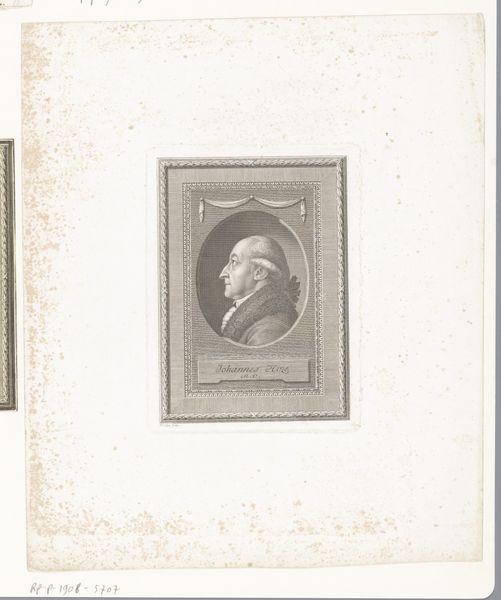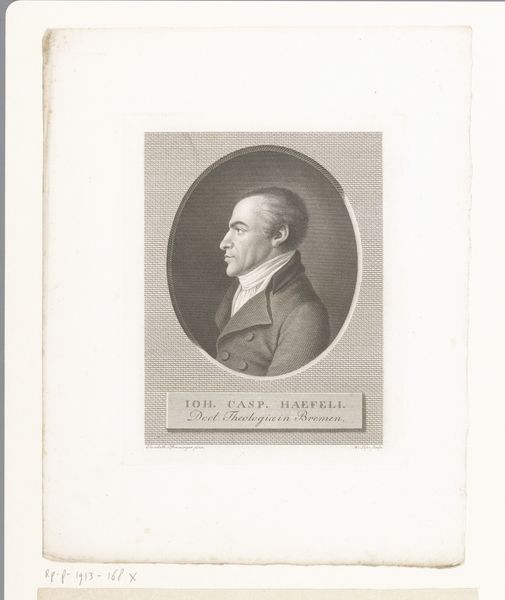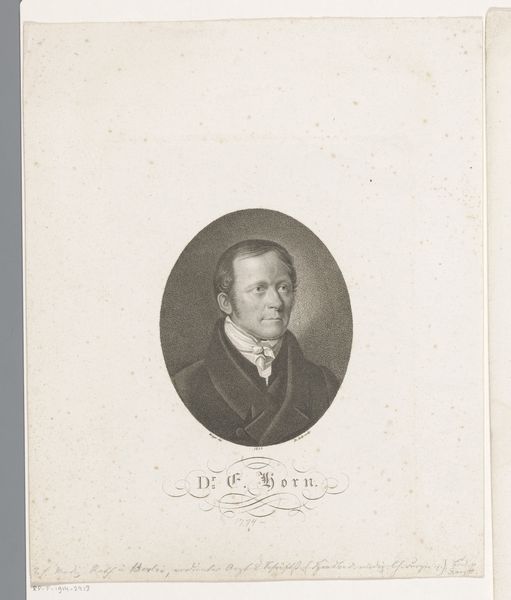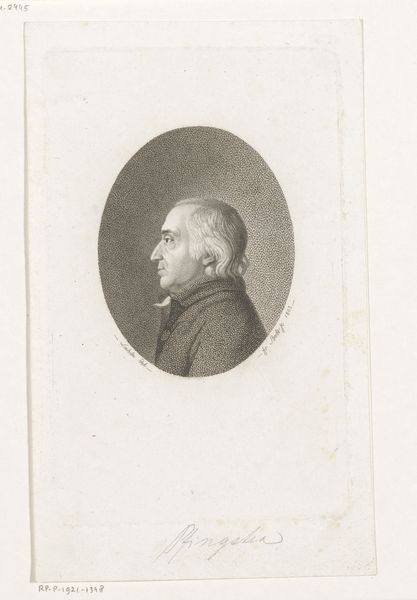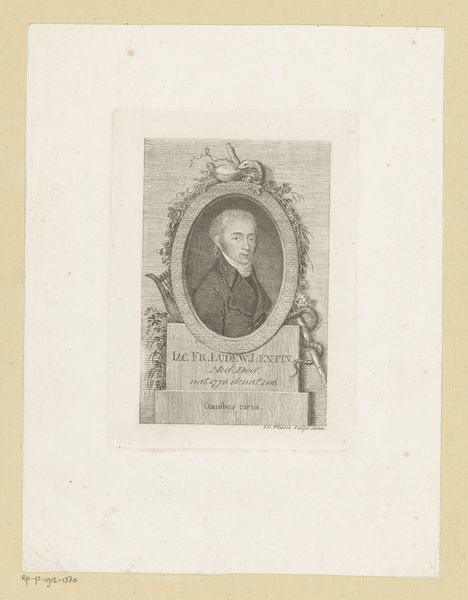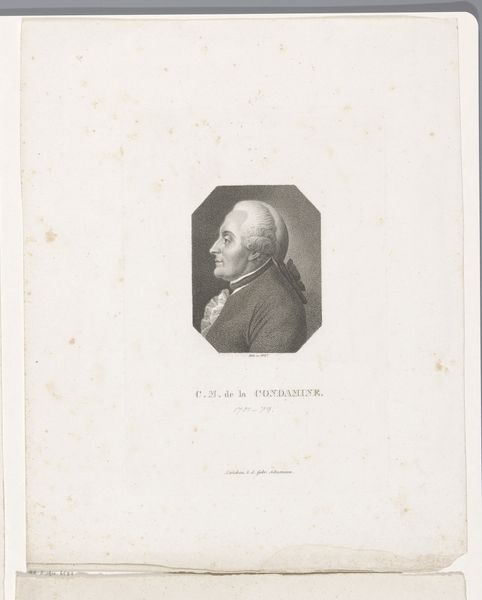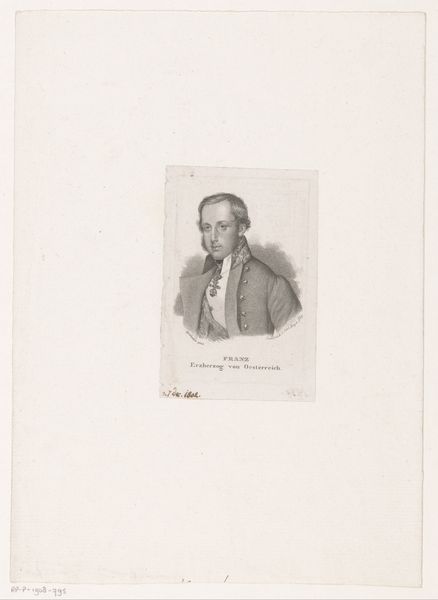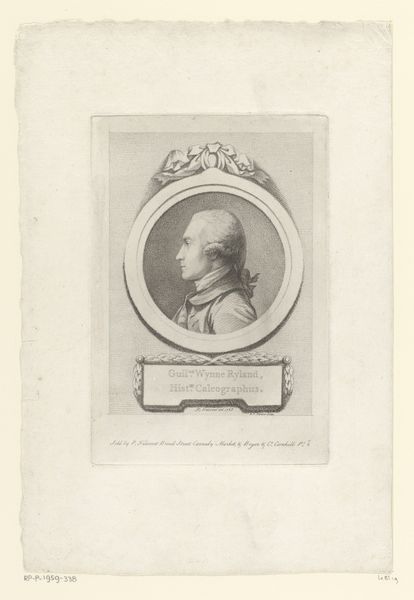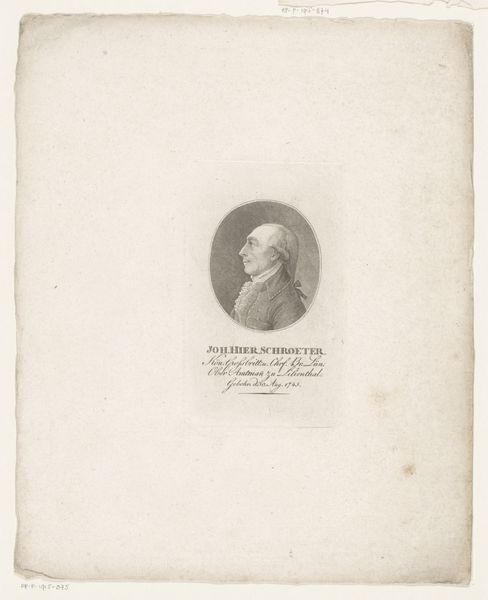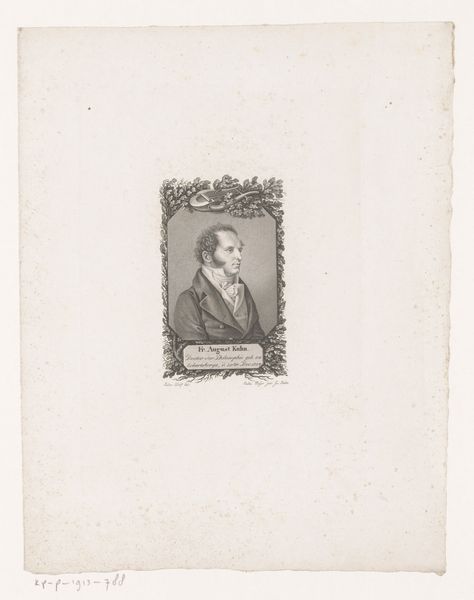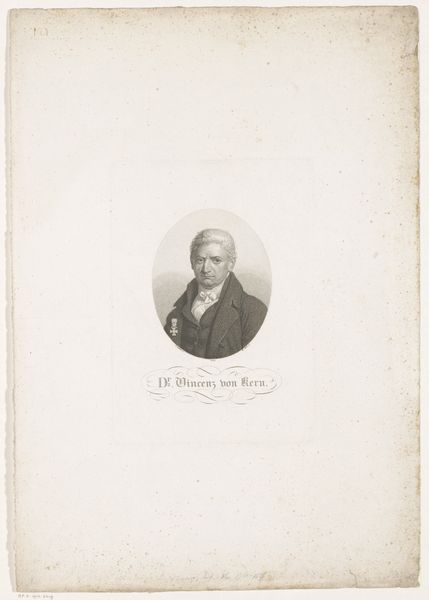
engraving
#
portrait
#
neoclacissism
#
engraving
Dimensions: height 103 mm, width 86 mm
Copyright: Rijks Museum: Open Domain
Curator: Looking at this artwork, what stands out to you immediately? Editor: The starkness, I suppose. The pale paper, the crisp lines. It's quite minimal in its approach, but very precise. A study in elegance achieved through simplicity, wouldn’t you agree? Curator: It's a fine observation. What we have here is an engraving, crafted between 1768 and 1817, and we see "Portret van Ignaz Heinrich von Wessenberg" by Johann Heinrich Lips. Knowing something about the subject perhaps enriches the interpretation? Wessenberg was a very prominent figure, whose life significantly shaped early 19th-century Catholicism and whose reformist thinking positioned him amidst intense religious and political clashes. Editor: So, if we view the piece formalistically, observe the subject framed in that perfect oval; note the tight, controlled hatching defining the contours of his face and clothing—it speaks to the Neoclassical aesthetic. It evokes rationality and order. Curator: Absolutely. Considering Neoclassicism's rise during the Enlightenment, a period grappling with shifting power structures and burgeoning scientific reasoning, Lips's portrayal invites a critical examination. In it we may question how the sitter navigated his own identity within those seismic shifts. The very act of immortalizing Wessenberg this way invites a meditation on the meaning of visibility and influence, who gets remembered and why. Editor: See, and that's where I would say that Lips succeeds, even subtly. I observe an incredible rendering of light across his brow—it emphasizes the intelligence, the incisive intellect for which Wessenberg was so renowned. There's so much implied by just the angle of his jaw and the set of his lips. The engraving technique gives texture to those nuances, the qualities of the overall piece that support this interpretation. Curator: Which makes one consider Wessenberg's own advocacy for social justice—how these features may reflect the intellectual energy he dedicated to championing causes of societal equity. How art captures the complicated nature of even progressive reformers who still occupy positions of authority and the tensions within the change process itself. Editor: It's interesting how this piece draws out such different yet connected reactions, depending on where we center our gaze. Curator: Indeed, it illustrates how historical figures are, and have always been, situated in webs of ever evolving context.
Comments
No comments
Be the first to comment and join the conversation on the ultimate creative platform.
